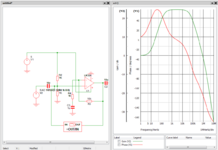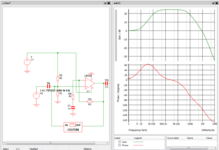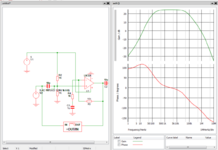Dragnovith
Junior Member level 1
I need to design this circuit with a gain of 26 for signals where the frequency varies from 800Hz to 8kHz and I also need to find out the current on the RL load. (VA = 100mV)
Will C1 behave like an open circuit in ac analysis?
I am getting to lower the frequency (800Hz) but I am not able to project to the frequency of 8kHz. Regarding the current I have a little doubt if it will be only 2.5 V divided by the RL.

Will C1 behave like an open circuit in ac analysis?
I am getting to lower the frequency (800Hz) but I am not able to project to the frequency of 8kHz. Regarding the current I have a little doubt if it will be only 2.5 V divided by the RL.


